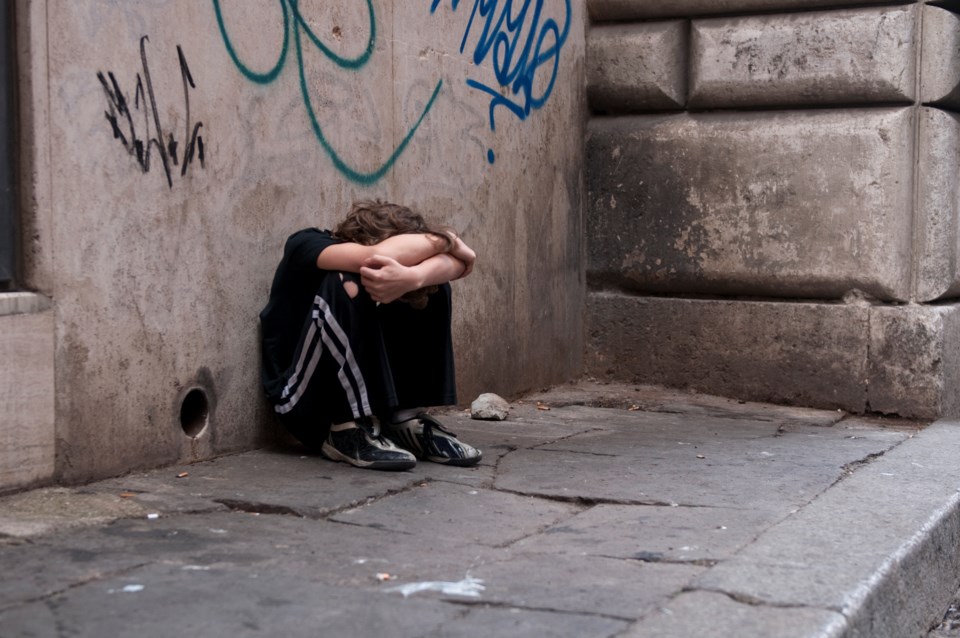Young people struggling with drugs don’t necessarily want treatment before they have the rest of their lives figured out, namely housing, employment and romantic relationships.
When they access treatment without dealing with these issues first, leaving treatment often means going back to the social conditions that triggered their substance use, explained Danya Fast, a research scientist with the BC Centre on Substance Use and a professor at UBC’s Department of Medicine.
“However, in the absence of desirable housing and adequate income, youth were often left with the crushing sense that, despite their efforts, treatment would not ultimately help them to ‘get somewhere better,’” the report noted.
Since 2016, 1,600 people in B.C. under the age of 30 have lost their lives to drug overdoses or drug poisonings.
A study of young people who were using drugs in B.C., “Youth Voices on Treatment: In the Shadow of the Overdose Crisis,” was just published last week by the BC Centre on Substance Use.
It includes recommendations on how young people felt they could best be helped, from getting adequate housing and jobs, not being seen as just a “file,” to acceptance by service providers of cannabis as a harm reduction strategy.
The young people whom the study followed for several years spoke of their hopes and dreams for a better life, with homes and jobs, to be able to spend time with friends, family and romantic partners, pursue hobbies and leisure activities, and go to school and get a career.
Often, young people felt the medical system was “pushing” medical treatment programs, like methadone, suboxone or mental-health medications, instead of addressing what they needed in their lives.
“They just pass you pills, and kind of make you feel better – better for the day,” was a comment from a Prince George youth, aged 23, in the report.
Fast pointed out a medical model of care with top-down solutions to substance use can remind young people of institutional experiences – and, therefore, can make them “turn and run away” from those trying to help them.
But, even where services are provided often turn young people off.
Fast has been working with young people under the age of 30 who are struggling with drugs and homelessness for 15 years. She said many of them will just leave when faced with these institution-like settings, because they see them as dangerous.
These are spaces that remind them of traumatic experiences in institutionalized settings, for example, of living in a foster home or of being in juvenile detention. The report notes, in particular, hospitals were seen as “unsafe places.”
Young people feel controlled and like they are under surveillance, Fast explained.
And what’s being offered doesn’t align with their goals, values and priorities, she added.
Even supportive housing can have this effect – “it’s like juvie” they told Fast.
Young people need social and cultural connections to deal with underlying issues, something Fast thinks should be offered on par with medical support.
It shouldn’t be an either/or situation, both are necessary.
But there’s a need for “non-medical spaces” where young people can connect with each other and advocates, people whom they trust and respect and who listen to them. This could be walk-in spaces where they can rest, get some food and have their priorities, needs and concerns heard.
Fast said, of all the young people she’s talked to, almost all of them have one trusted advocate in their lives.
“Relationships can be life-saving in this context,” Fast said.
Cannabis use as harm reduction
About 98 per cent of street-involved youth Fast has worked with report using cannabis, and for many, it reduces their dependence on harder drugs, like crystal meth and heroin/fentanyl.
One of the key recommendations in the report is to “acknowledge the use of cannabis as a treatment and harm reduction strategy.”
A 21-year-old man from Vancouver told the researchers that “(cannabis is) like harm reduction for me. If I smoke weed all day, I might not even notice that there’s no heroin in me.”
When young people get negative messages about cannabis and are told it’s just another drug and they need to abstain from it, they will think “this person doesn’t understand me and what cannabis does for me,” Fast said.
“At the very least, providers need to be ready to open up to these conversations,” she added.
Young people more than just a “file”
Among the recommendations in the report, the researchers state “Do not reduce youth to their ‘files’.”
At a recent youth forum on substance use, young people told organizers again and again how they were perceived as just a “file,” that is, they were talked about like a case and not like a person, with workers discussing amongst themselves the past history of the youth.
While this might be “totally unintentional” and an attempt to make sure services aren’t siloed, Fast cautions young people might think they are now labelled as having “screwed up” or too damaged.
Young people expressed to the researchers, when their files were discussed among various agencies or facilities, they couldn’t have a fresh start, that their past was following them.
“It emerged as a really critical concern,” Fast said.
Fast has met many young people from Richmond struggling with these issues. Sometimes, youth from Richmond go to downtown Vancouver because that’s where they can access more services.
Other youth in the suburbs, however, prefer to avoid downtown Vancouver because the services provided don’t match what they’re looking for.
Fast believes young people need to be approached “where they’re at” with service providers listening to what they need to improve their lives.
“I think the way young people think of success and how we think of success can be very different,” Fast said.



